Democracy or Constitutional Republic?
Segment #432
A democracy is a system where the majority rules, typically through direct voting (pure democracy) or elected representatives (representative democracy). Decisions are based on the will of the majority, with fewer structural limits on what the majority can decide.
A constitutional republic is a form of representative democracy where elected officials govern, but their power is constrained by a constitution that establishes checks and balances, protects individual rights, and limits what the government can do, even if the majority supports it. The constitution serves as a higher law, often safeguarding minority rights against majority tyranny.
Key Differences:
Scope of Power: In a democracy, the majority's will can dominate with fewer restrictions. In a constitutional republic, the constitution limits government authority to protect rights and maintain structure.
Protection of Rights: A constitutional republic explicitly prioritizes individual and minority rights through constitutional protections, while a pure democracy may not, risking "mob rule."
Structure: A constitutional republic includes mechanisms like separation of powers (e.g., legislative, executive, judicial branches) and checks and balances, which may not be inherent in all democracies.
Example: The United States is a constitutional republic, not a pure democracy, as its Constitution limits government power and protects rights, with institutions like the Supreme Court and Electoral College balancing majority rule.
Balance Between Federalism and States Rights
In the U.S., the balance between federalism and states' rights is a dynamic tension rooted in the Constitution, shaped by historical, legal, and political developments. Federalism structures the division of power between the federal government and states, while states' rights emphasizes state autonomy against federal overreach. This balance is maintained through constitutional design, judicial interpretation, and ongoing political negotiation, but it has shifted over time.
Constitutional Framework
Federalism: The U.S. Constitution divides powers:
Enumerated powers (e.g., Article I, Section 8) grant the federal government authority over areas like defense, interstate commerce, and foreign affairs.
Reserved powers (10th Amendment) leave all other powers to the states or the people, such as education, law enforcement, and local governance.
Concurrent powers (e.g., taxation, lawmaking) are shared by both levels.
The Supremacy Clause (Article VI) establishes federal law as supreme when it conflicts with state law, ensuring federal authority in its domain.
States' Rights: The 10th Amendment is the cornerstone of states' rights, asserting that powers not delegated to the federal government are reserved to the states. This fuels arguments for state sovereignty in areas like election laws or public health.
Mechanisms Balancing the Two
Checks and Balances:
The federal government is constrained by separation of powers (legislative, executive, judicial) and checks like the Senate, where each state has equal representation, amplifying state influence.
States can challenge federal laws through lawsuits or non-compliance (e.g., sanctuary states resisting federal immigration enforcement).
Judicial Review:
The Supreme Court interprets the balance of power. Landmark cases include:
McCulloch v. Maryland (1819): Upheld federal supremacy by affirming implied powers and prohibiting states from taxing federal entities.
United States v. Lopez (1995): Limited federal power under the Commerce Clause, reinforcing state authority over local issues like gun possession near schools.
Printz v. United States (1997): Protected states' rights by striking down federal mandates requiring state officials to enforce federal gun laws.
Political Processes:
States influence federal policy through their congressional representatives and the Electoral College, which gives smaller states disproportionate weight.
State legislatures can propose constitutional amendments or resist federal policies through legislation or resolutions.
Historical Shifts in Balance
Early Republic (1789–1860): States' rights were prominent, with debates over federal tariffs and slavery. The nullification crisis (1832–33) saw South Carolina claim the right to nullify federal tariffs, but federal authority prevailed.
Civil War and Reconstruction (1861–1877): The defeat of the Confederacy crushed extreme states' rights claims (e.g., secession). The 14th Amendment expanded federal power to protect individual rights against state violations.
New Deal Era (1930s–1940s): Federal power grew with economic programs, as the Supreme Court broadly interpreted the Commerce Clause to uphold federal regulations (e.g., Wickard v. Filburn, 1942).
Civil Rights Era (1950s–1960s): Federal authority expanded to override state segregation laws, reinforcing federal supremacy in protecting constitutional rights (e.g., Brown v. Board of Education, 1954).
Modern Era (1980s–Present): A resurgence of states' rights has occurred, with the Supreme Court limiting federal overreach (e.g., NFIB v. Sebelius, 2012, restricting parts of the Affordable Care Act) and states asserting autonomy in areas like marijuana legalization, gun laws, and election administration.
Current Dynamics (2025)
Federalism in Action:
Cooperative federalism prevails in areas like infrastructure funding, where states and the federal government collaborate (e.g., bipartisan infrastructure bills).
The federal government enforces national standards (e.g., environmental regulations) while states innovate with policies like renewable energy mandates.
States' Rights Challenges:
States challenge federal policies through lawsuits, such as Texas and others suing over federal immigration enforcement or vaccine mandates.
Red and blue states diverge on issues like abortion (post-Dobbs v. Jackson, 2022) and voting laws, with states asserting control absent federal consensus.
Sanctuary cities and states resist federal immigration policies, while others align with federal enforcement, highlighting varied state responses.
Tensions and Examples
Abortion: After the Supreme Court returned abortion regulation to states, some states (e.g., California) expanded access, while others (e.g., Texas) imposed strict bans, showcasing state autonomy within federalism.
Elections: States control election processes (e.g., voter ID laws, mail-in voting), but federal oversight ensures compliance with constitutional rights (e.g., Voting Rights Act).
Marijuana: Over 20 states have legalized recreational marijuana, defying federal prohibition, illustrating states' rights in practice, though federal law could preempt state policies.
Conclusion
The U.S. balances federalism and states' rights through a constitutional framework that allocates powers, judicial rulings that clarify boundaries, and political processes that negotiate conflicts. Federalism ensures a structured division of authority, while states' rights empowers states to resist perceived federal overreach. This balance evolves with societal needs, legal precedents, and political climates, making it a cornerstone of U.S. governance. The tension—cooperation versus resistance—reflects the U.S.'s commitment to both national unity and state diversity.


